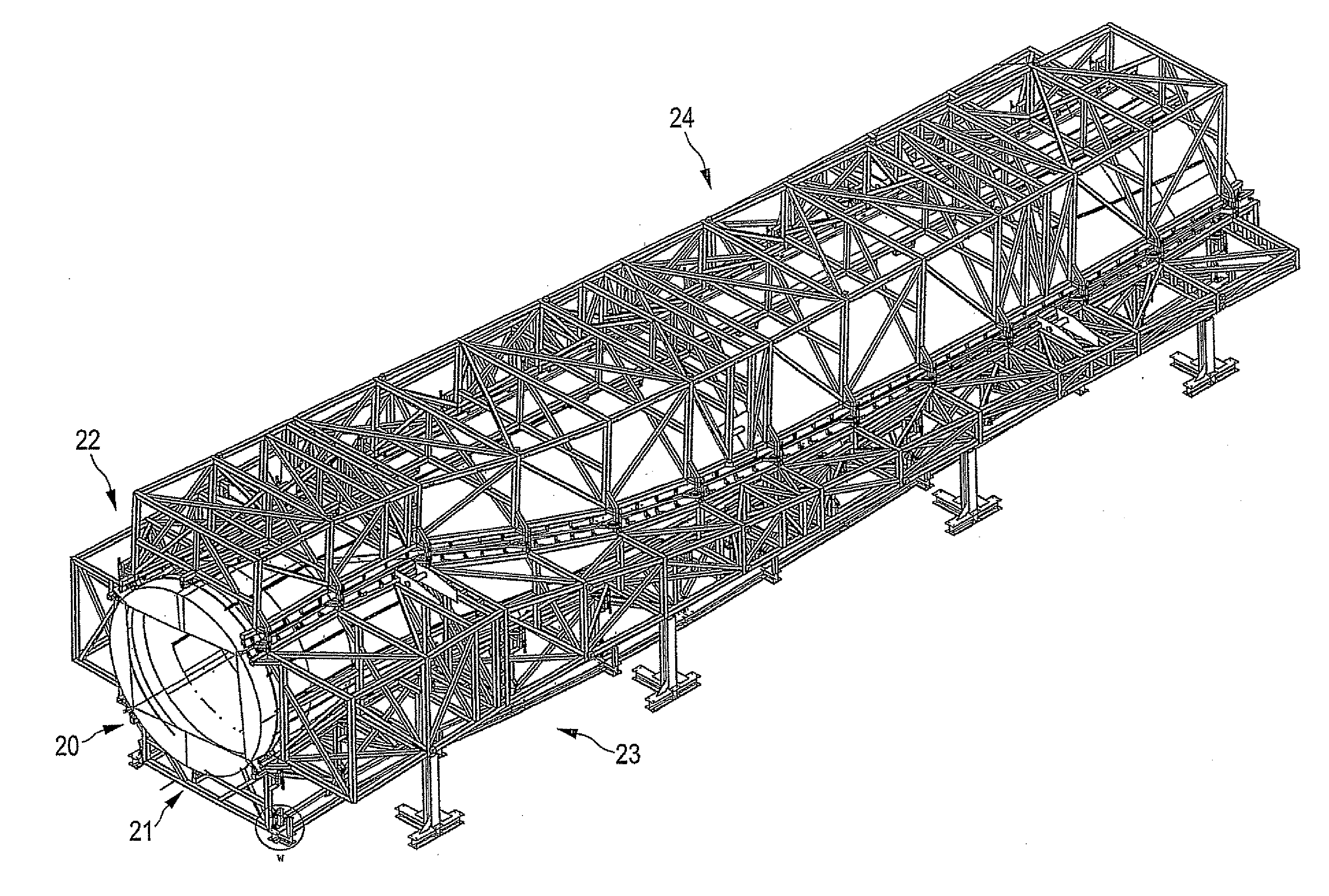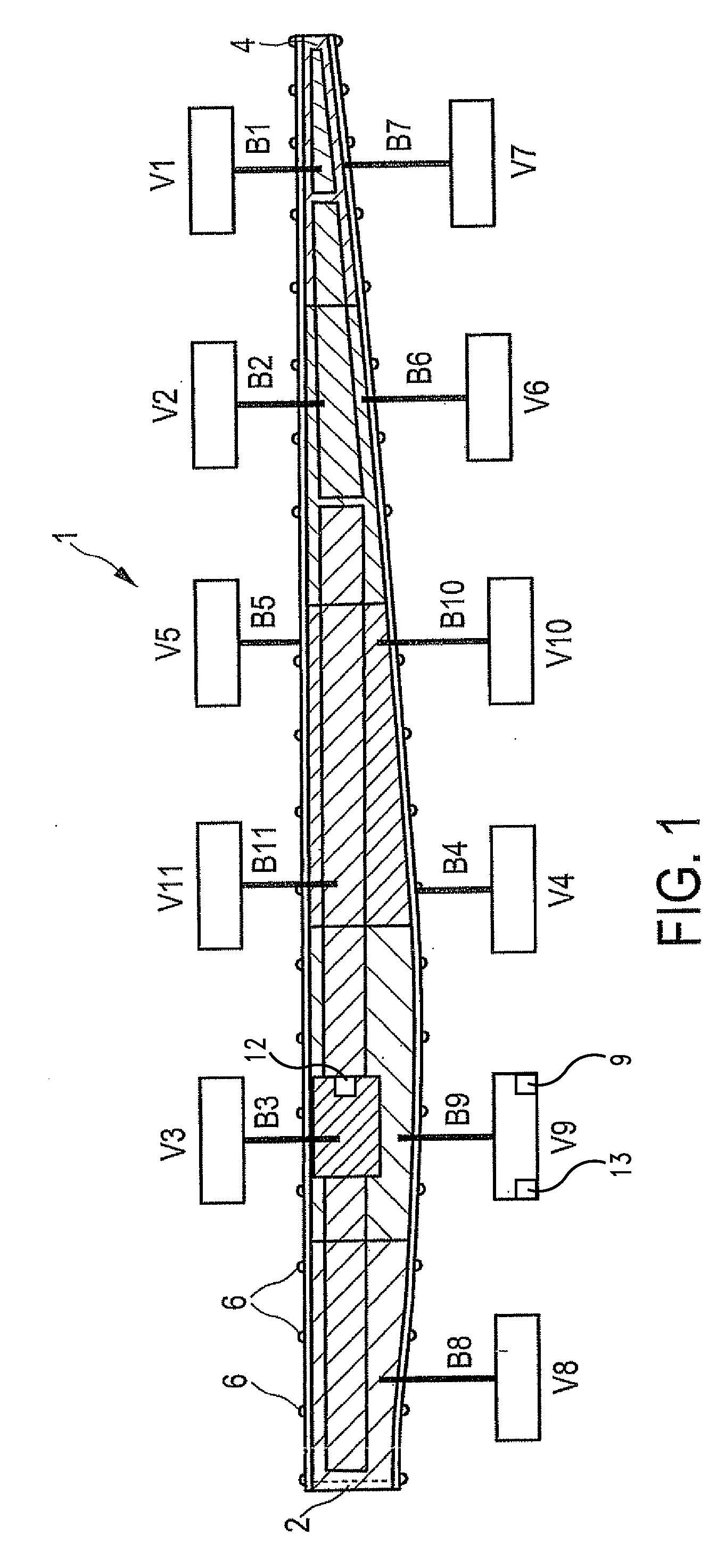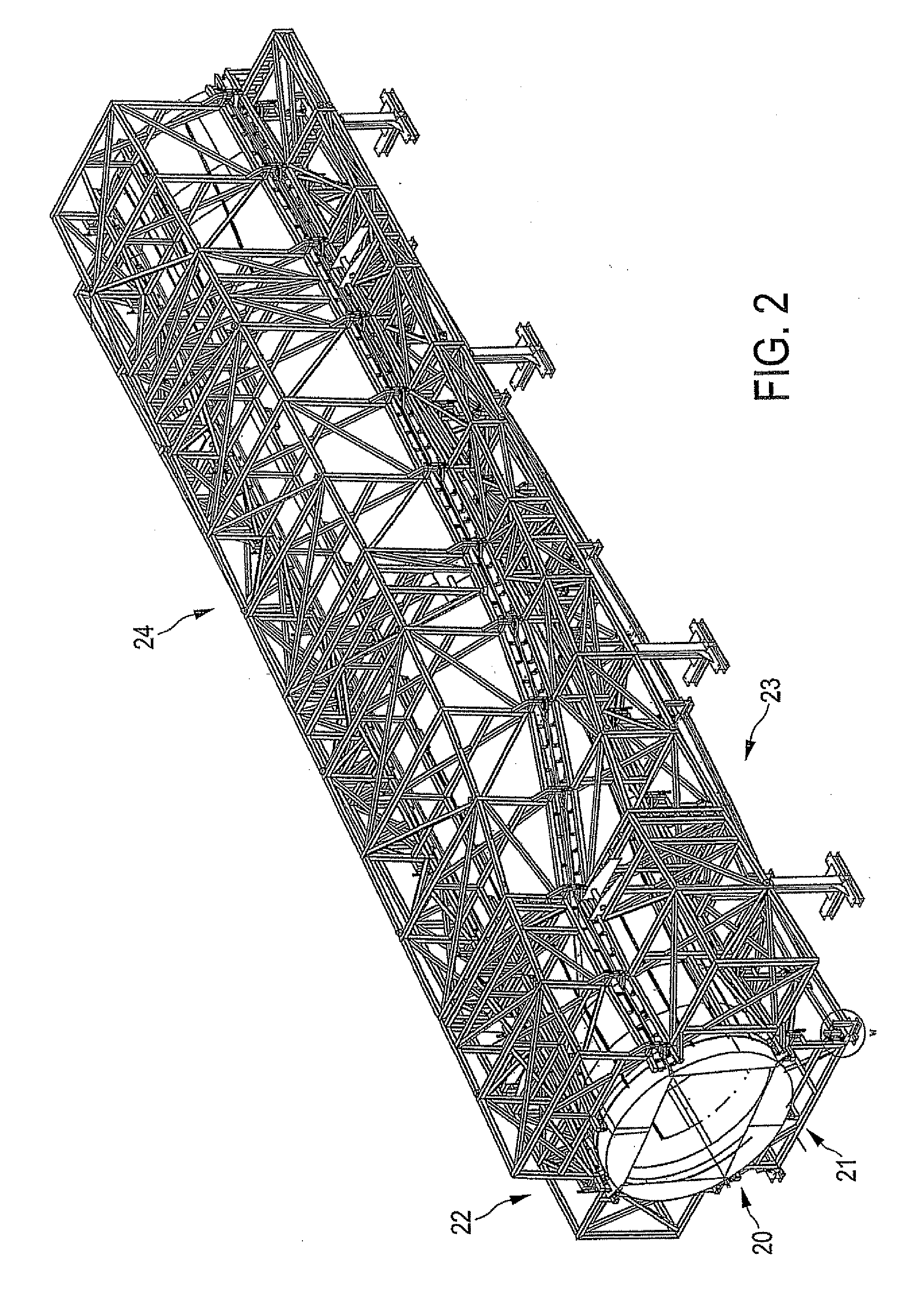Rotor blade form for producing a rotor blade of a wind power plant
a technology of wind power plants and molds, which is applied in the direction of mechanical control devices, instruments, paper/cardboard containers, etc., can solve the problems of exothermy, complicated and expensive heating systems, and high cost, and achieve the effect of reducing or shutting down heating operations, and rapid detection of rises in temperature in individual heating regions
- Summary
- Abstract
- Description
- Claims
- Application Information
AI Technical Summary
Benefits of technology
Problems solved by technology
Method used
Image
Examples
Embodiment Construction
[0056]The rotor blade mold 1 in FIG. 1 is provided for producing a rotor blade half-shell. Two rotor blade half-shells can then be assembled to form a complete rotor blade after each half-shell has hardened in itself. The rotor blade mold 1 includes 11 heating regions B1 to B11 with 11 supply units V1 to V11. In accordance with the rotor blade to be produced, the rotor blade mold 1 has a root region 2 and a tip region 4, in which a root region of the rotor blade and the tip of the rotor blade are respectively correspondingly produced. FIG. 1 also shows portions of reinforcing bars 6 at their respective ends. FIG. 1 shows a view of the open rotor blade mold 1 and thus substantially a shaping surface of the rotor blade mold 1.
[0057]The rotor blade mold 1 is divided in length, namely from the root region 2 to the tip region 4, into the five main heating regions B8, B9, B10, B6 and B7. Those main heating regions achieve in particular uniform heating of the complete rotor blade mold 1 in...
PUM
| Property | Measurement | Unit |
|---|---|---|
| width | aaaaa | aaaaa |
| length | aaaaa | aaaaa |
| length | aaaaa | aaaaa |
Abstract
Description
Claims
Application Information
 Login to View More
Login to View More - R&D
- Intellectual Property
- Life Sciences
- Materials
- Tech Scout
- Unparalleled Data Quality
- Higher Quality Content
- 60% Fewer Hallucinations
Browse by: Latest US Patents, China's latest patents, Technical Efficacy Thesaurus, Application Domain, Technology Topic, Popular Technical Reports.
© 2025 PatSnap. All rights reserved.Legal|Privacy policy|Modern Slavery Act Transparency Statement|Sitemap|About US| Contact US: help@patsnap.com



